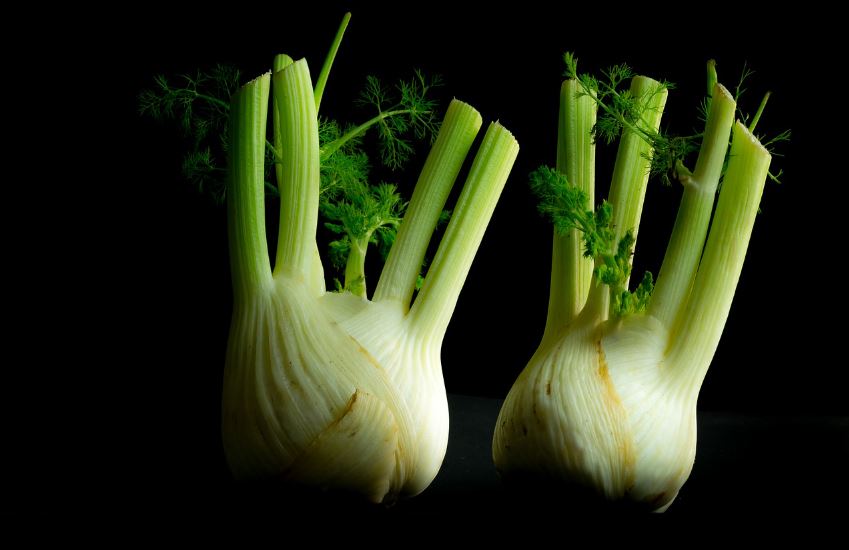When to sow fennel?
The fennel sows from April to June. We will opt for a hot sowing, except put in the south, where it is possible to carry out a sowing in place from the month of May. It is possible to do a second sowing, in place, from mid-July to the end of August.
Which varieties to choose?
Bulbous fennel
This fennel is easily identified with its white bulb. The name is otherwise improper, because this white and pearly globe is actually composed of very compact leaves, with a slightly aniseed flavor. There are many varieties, and the choice is mainly based on the climate and the sowing period.
- The white fennel from Florence is a winter variety that lends itself to sowing in late summer;
- The Romanesco fennel is a particularly productive late variety: it is distinguished by its bulb which can weigh up to a kilo;
- The Selma fennel is valued for its resistance to run and for its sweet flavor;
- Early, the Final Fennel is one of the most fragrant;
- The Geant Mammoth is a bulky bulbous variety, often favored in the North.
Perennial fennel
The bronze fennel takes its name from the very specific color of its foliage. If it delicately perfumes salads, soups and especially fish, it is also appreciated for its beautiful coppery aspect. It is therefore grown in both massifs and vegetable garden. If it is also fragrant in the kitchen, the wild fennel offers a very different appearance: producing lush green foliage, it can easily reach 1.50 m in height.
What to do before sowing the fennel (preparation etc)?
The fennel will enjoy a rich, loose and not stony soil. Work the ground on 30 cm at the fork. Make sure to amend it: you can opt to add manure or mature compost. Count 3 kg per m². If the soil is too heavy and compact, you can also add some sand. Carefully dispose of weeds, roots and pebbles.
How to sow it?
Hot sowing
For early planting, it is best to opt for sowing in terrine. The technique is simple:
- Fill the terrine with ¾ of potting soil for sowing and tamp;
- Sow clear;
- Cover with potting soil (about 1 cm) and tamp.
The ideal is to opt for watering by capillarity. Place the terrine in a warm and bright space. After emergence, clear up. Wait until the plants measure 10 cm to transplant. Be sure to take them with a clump of soil around the roots, using for example a spoon. To transplant, prepare furrows 6 cm deep, and space the young plants 20 cm.
Sowing in place
- Draw furrows 1 cm deep, spaced 40 cm apart;
- Sow in line, spacing the seeds by 5 cm (count 3 cm for your early sowing);
- Cover with potting soil and tamp with the rake;
- Water in fine rain.
Wait until the plants are sufficiently developed – about 6 weeks after sowing – to clear up. Keep one plant every 20 cm. Good to know: at this stage, the fennel is developed enough to be transplanted: the plants removed are not lost! Only one precaution is necessary: use a spoon or a drip stick to recover the roots in the damage.
Where to plant fennel?
The fennel will enjoy a sunny location. If it is not very demanding, it is not always easy to integrate into the garden. Its neighborhood actually inconveniences many crops: beans, tomatoes or cauliflowers. It will be confined to leek and celery.
How to maintain it?
Fennel will enjoy some fertilizer. To obtain white bulbs, monitor their growth and make sure to butter them regularly.
How to water the fennel?
Fennel will tend to harden quickly in case of drought. The lesser hydric stress will accelerate the rise to seeds. It is therefore essential to offer a very regular watering, to offer him a fresh floor permanently. Water preferably at the end of the day, do not hesitate to thoroughly soak the roots.
Harvesting the fennel: when and how?

The fennel is harvested about 3 months after sowing, as and when your needs. To remove it without damaging it, use a fork-fork and simply move the lever.
At the end of the season, you can harvest the plants you have not eaten. You can freeze them. If you have a cellar, the ideal is however to keep them in crates filled with sand.
If you want to recover seeds, let some plants bloom.
Fennel diseases and what to do?
Fennel does not fear disease or pests. It must be said that there is only the aphid ventures to storm him. To stop the invasion, simply opt for a treatment with black soap diluted to 5% – or 5 tablespoons per liter of water. Spray on your fennel, preferably at the end of the day. Be sure to spread black soap on the leaves, but also underneath. In case of massive invasion, it may be necessary to carry out a second spraying, 7 to 10 days later. This treatment has the advantage of acting both as an insecticide and as a cleaner: not only will it kill aphids, but it will also eliminate their honeydew, which is the true culprit of crop dieback.
Read also :









